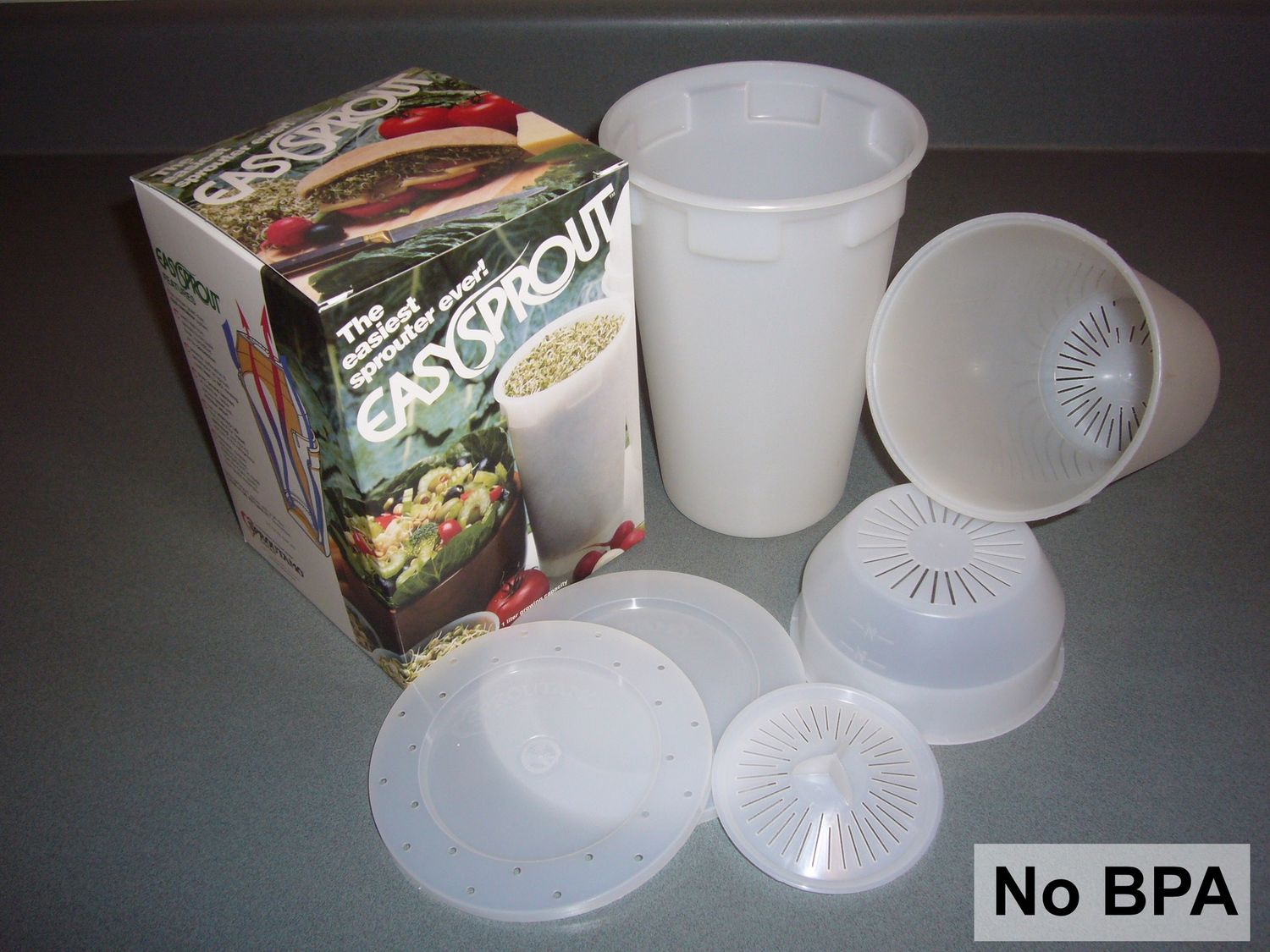Free delivery for orders over $75.
Easysprout
$14.99
Buy and save
Buy and earn $0.74 Loyalty for your next purchase
Loyalty is a discount program that lets you buy products and earn points to redeem on your next purchase. Your Loyalty balance is updated when you pay online or in-store. The Loyalty amount shown on this page can be recalculated at the checkout.
In stock: 40 available
Product Details
UPC: 030852115553
Brand: Sproutamo
Nutritional Benefits of Sprouts
Seeds, before sprouting, are nutrient-bound, enzymes lie dormant. Seeds are soaked to start the sprouting cycle; enzymes are mobilized. Sprouts� high enzyme activity is never surpassed at later stages of plant growth. Enzymes convert stored starch into simple sugars, split long-chain proteins into free amino acids, and convert fats into free fatty acids.
Enzymes and Nutrients Step Up with Sprouting
Vitamins, such as A, B vitamins, C, E, and K, increase to meet the growth needs of a young plant. While raw vegetables and fruits contain enzymes, they are low in enzyme content compared to sprouted grains and beans. In his book, Enzyme Nutrition, Dr. Edward Howell noted that sprouts have 10 to 100 times more enzymes than raw fruits and vegetables! Sprouting activates the enzymes needed to turn seeds into mature plants.
When seeds sprout, increases in proteins, vitamins, and minerals of 200% to 1200% are common. For some seeds, sprouting realizes even higher returns. The riboflavin (vitamin B2) content of Oats, for example, increases 1300%, and, if grown to leaf stage, achieves a 2000% increase. Vitamin C in sprouted wheat rises 600%, while vitamin B12 increases by 400% and vitamin E goes up by 300%. In Mung Beans, sprouting has been found to increase vitamin A by 285%, vitamin B1 (thiamin) by 208%, vitamin B2 (riboflavin) by 515%, and vitamin B3 (niacin) by 256%. When dried whole peas sprout, the vitamin C in a 100-gram serving (1/2 cup) has been found to increase from 0 to 69 mg. in 48 hours.
Sprouts supply essential minerals � calcium, magnesium, iron and zinc � in organic form, already chelated for immediate use by the body. Protein levels rise during sprouting, while the ratio of essential to non-essential amino acids changes to reflect what our bodies need. Nutritionist Dr. Frances Grba noted, “Sprouts become sources of complete protein, able to sustain human life without recourse to other foods. They contain the most assimilable vitamins available because they come wrapped with all the minerals, enzymes and still-unknown factors so necessary to the full utilization of our food. When they are added to other foods, they make the nutrients in these foods more usable to the body.”
Living sprouts and other whole foods contain phytonutrients, bio-active plant compounds. As antioxidants, phytonutrients trap harmful molecules in the body known as free radicals, cell-destroying compounds that can cause heart disease, cancer, and strokes. Raw and natural foods preserve phytonutrients; cooked and processed foods do not.
The Power of Enzymes
Enzymes support all living systems. Cooking destroys enzymes. When we eat cooked food, our bodies make a “withdrawal” from our enzyme stores to digest what we have eaten. But, when we eat living and raw foods, we preserve our bodies� store of enzymes. Enzymes are biological catalysts that make every life process and bodily function work. Raw and living foods contain enzymes; cooked foods do not. Eating enzyme-rich foods spares the body from having to produce its own digestive enzymes; eating enzyme-deficient foods taxes the body�s enzyme stores.
Seeds are already full of all the nutrients they can deliver � once they are sprouted! Sprouting unleashes the enzymes and nutrients contained in seeds, beans, grains and nuts. Enzymes break down seed protein, carbohydrate, and fat into free amino acids, minerals, simple sugars and soluble compounds. New and existing vitamins increase dramatically and calcium, magnesium, iron, and other vital minerals become more assimilable after the seeds begin to sprout.
How important are enzymes to DNA? Chromosomes contain the long DNA molecules that carry genes. The tails at the ends of chromosomes, telomeres, protect the chromosomes. The enzyme telomerase builds telomeres. Cells age if telomeres shorten. But, if telomerase activity is high, cell aging is delayed. In 2009, Elizabeth H. Blackburn, Ph.D., Carol W. Greider, Ph.D., and Jack W. Szostak, Ph.D. were awarded the Nobel Prize in Physiology or Medicine for this important discovery.
Save this product for later
Easysprout
Display prices in:USD

